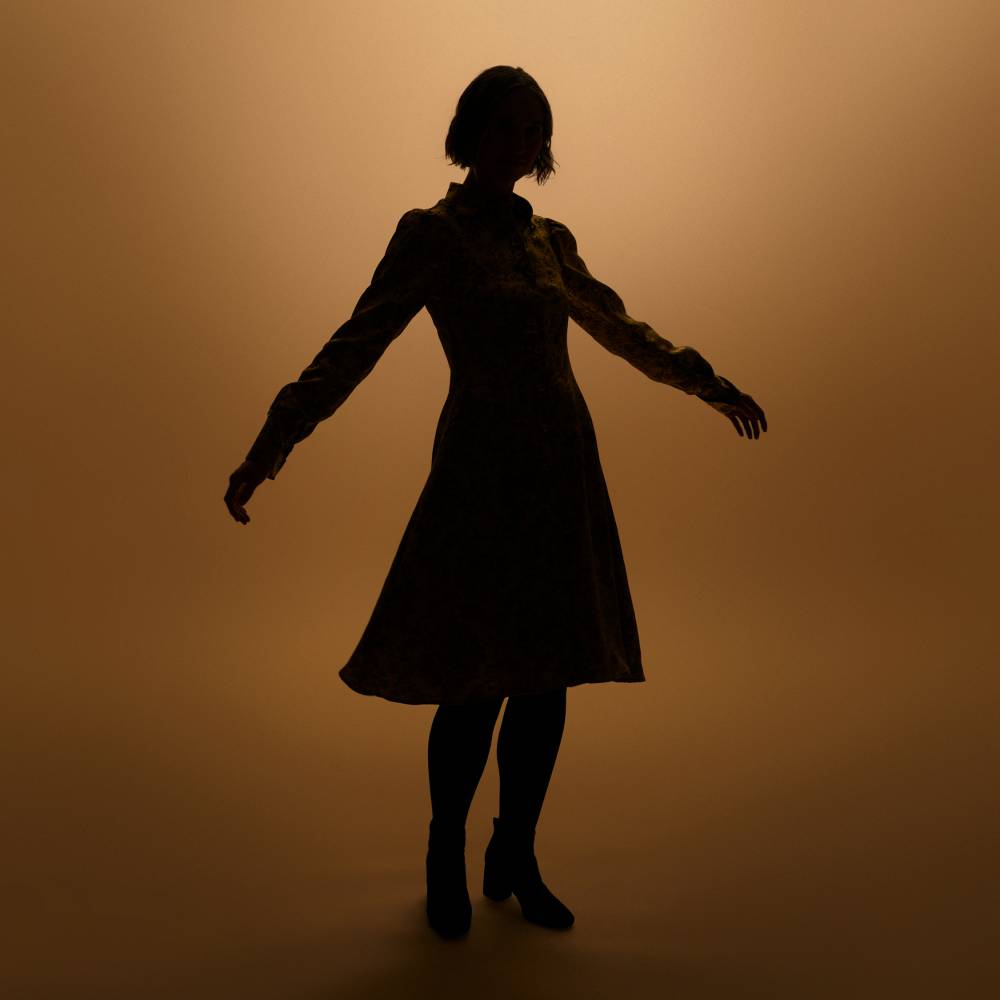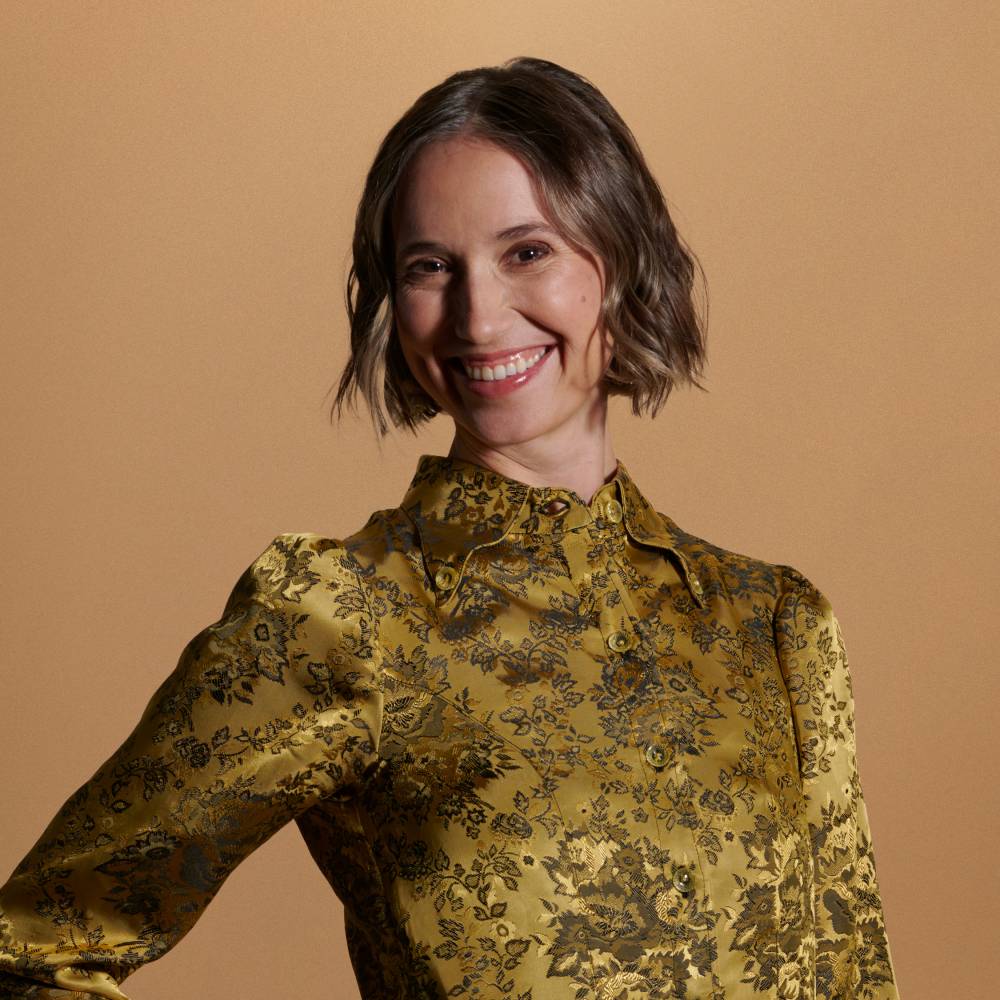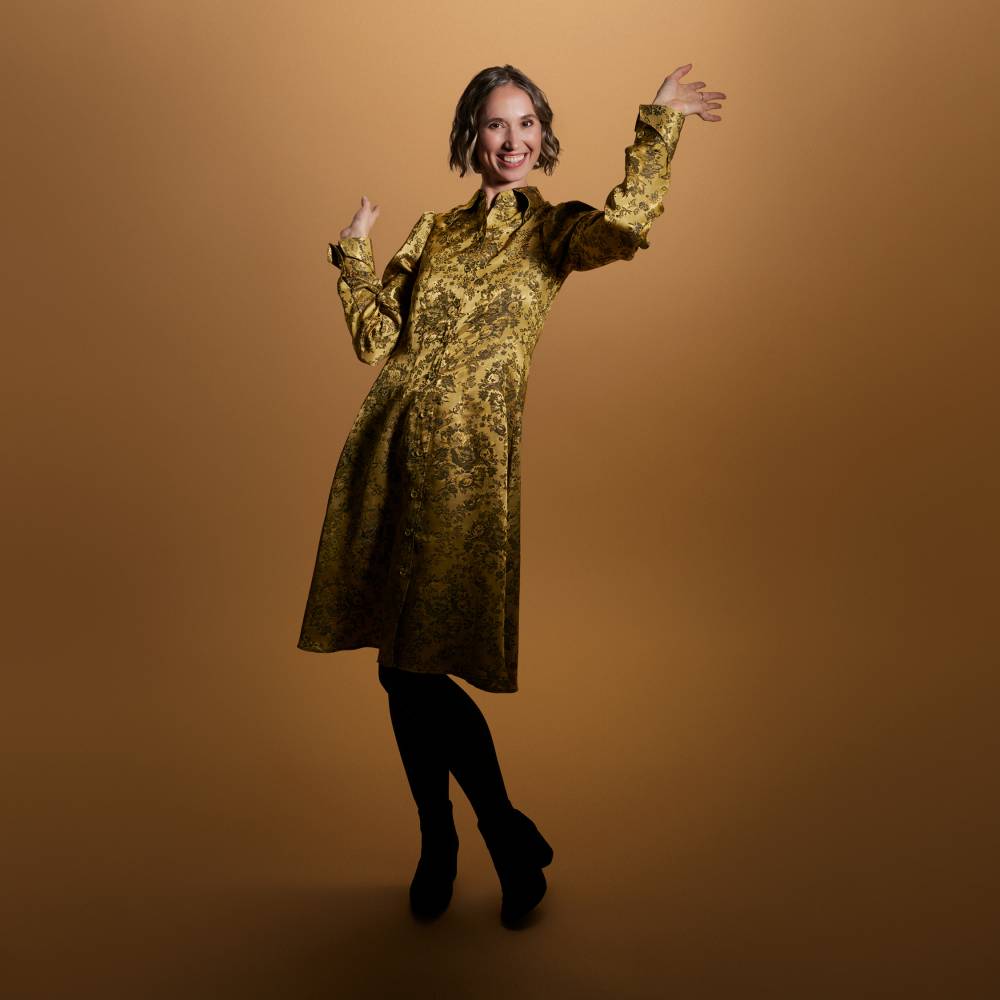BEYOND THE SCREEN
Swiss costume designer Laura Locher explains how costumes influence the actors’ performance and how fashion and costume design differ.
21.11.2024
Laura Locher studied fashion design in Denmark and has since worked as a costume designer for feature films, theatre and opera, as well as a freelance artist. Her creations can be seen in numerous Swiss film productions and coproductions, including BLUE MY MIND by Lisa Brühlmann, SOUL OF A BEAST by Lorenz Merz and CALCINCULO by Italian director Chiara Bellosi. She is currently working on the costume design for Nicolas Steiner’s new film SIE GLAUBEN AN ENGEL, HERR DROWAK?, due to premiere in 2025.




How did you become a costume designer?
I lived in Denmark for eight years, where I studied fashion design. When I came back to Switzerland, I wasn’t all that keen on going into commercial fashion. Director Lisa Brühlmann, who was working on a short film during her studies at the time, asked me if I wanted to do the costumes. After that, I got more projects as a costume designer in film, theatre and opera. I can apply much of what I learned during my studies in my work as a costume designer. In some ways, the artistic processes are very similar. Unlike in fashion, where clothes are mass-produced, costumes are unique. Because I particularly enjoy brainstorming, the process and the creation, costume design an ideal form of expression for me.
What influence did Denmark have on you?
I spent my formative years in Denmark, and that had a great influence on me. The studies were taught in Danish, which is how I got to know the Danish culture. At the Designskolen Kolding, I learned design thinking – an extremely valuable tool for the process of all my projects. The black humour, warmth, high level of emotional intelligence, ability for self-irony and, in some respects, the Danes’ very modern way of thinking still fascinate me today.
At what point are you involved in the projects?
Sometimes I’m approached years before a project is financed to develop moods for the characters. In other cases, I don’t hear about a project until half a year before shooting begins. The preparation phase then officially gets underway four to ten weeks before shooting begins, depending on the size and complexity of the project. In many cases, however, I develop the first ideas even earlier.
Who do you work most closely with during the preparation phase and on set?
Most of the design work is done before shooting begins. Costume design comes into contact with many different departments, such as directing, acting, make-up, production design, camera, sound and special effects. So I often work with a lot of people at the same time. On the set, I work most closely with the set costume and my assistant.
What was your favourite project?
CALCINCULO by Chiara Bellosi, a coproduction between tellfilm and the Italian production company tempesta. I was able to spend three months in Rome for it. The preparation and the shooting took place in Rome, and we spent the last week of shooting in Lugano. Most of the crew were Italian and working with them was a dream.
It was a wonderful challenge to find the costumes for the non-binary Amanda and to develop a unique style for this character in collaboration with the director and the actor. The character of Amanda gradually emerged during the fittings. The production manager understood a great deal about costume design and was able to understand and even anticipate challenges. The Italian crew worked extremely professionally, which is presumably due to their long film tradition.
Do the designs have to meet special criteria?
Yes, on the one hand, the costumes should help to shape the character of the role and help the actors to get into their respective roles. That’s the emotional level. On the other hand, they are part of the overall image, so the colours, structures and shapes of the costumes shape the visual and artistic level of the film. This requires close collaboration with the director, production design, camera and make-up departments.
Depending on the scene, further technical demands may arise: for example, when a wetsuit has to be worn under the costume because the character is supposed to fall into a cold lake. Or an actress is supposed to float through a room and has to wear a corset under the costume with steel cables attached to it. It gets complicated when the same costume appears in several scenes and must be adapted to meet very different requirements.
What was the trickiest situation for you on set? Have you ever had to intervene with thread and needle?
Normally, the set costume or assistant intervenes if something needs to be changed at short notice. But once during a shoot, a costume was lost that was supposed to be used in further scenes – a cardigan from a second-hand shop. We found a similar knitted jumper, altered it, sewed on the right buttons, drew the pattern on it with a felt-tip pen and dyed it with black tea. When we brought it to the set after 24 sleepless hours, the director said: Oh! Did you find it?
How important are comfort and the historical accuracy of the costumes?
Ideally, the clothes are comfortable so that the actors can concentrate on acting. For instance, we usually use paint rather than real dirt to create a patina and to prevent the costume from smelling. But how the body feels in the costume is extremely important, i.e. how a shoe feels on the foot, how it affects the gait or how tight a garment is on the body. Comfort is sometimes not the goal.
Whether costumes should be historically accurate depends entirely on the project and the director’s vision. A costume might work better when it is not historically accurate, because it is more important to emphasise a certain mood or evoke a poetic moment.
Have you ever had to reject a costume?
Yes, but not for technical reasons. It was for financial reasons, because too many multiple costumes were needed for one scene: six people were supposed to jump into the water wearing suits. Buying three of each suit was simply too expensive. The scene was then rewritten and, in the end, only one person jumped into the water.
What happens to the costumes after the shoot?
Gosh, it varies. For my last film, the production company wanted to keep the main characters’ costumes in case there was a need to reshoot a scene. The Italian production kept all the costumes until the editing was finished, then they donated them to a film school. Sometimes I’m allowed to keep certain costumes. Some are sold to the crew or end up in thrift shops. Some actors like to keep their costumes, or parts of them. Anything borrowed from props or from a private source goes back to the appropriate places.
Do you need to be on site all the time or are you finished once the costumes have been handed over?
I’m always on set when a new costume is needed. I check with the director and the camera operator whether the costume actually works in context. Since there are usually many roles and they wear different costumes, I’m often on set. And when I work abroad, I’m always on set.
Are there big differences between working for theatre and working for film?
The shooting time for a film is roughly the same as the rehearsal time for theatre. I am also on site a lot for theatre, either for fittings or rehearsals. Costume work for both film and theatre is very detailed and many decisions have to be made: the length and type of hem, the texture of the fabric, exact colour shades, the shape of a sleeve, combining different costume pieces with each other – in addition to the overall expression, of course. All of this requires a lot of time and close collaboration with the tailors, assistants, make-up artists, actors, directors and set designers, and therefore a lot of input. In that respect, film and theatre are very similar.
You work with many different female filmmakers. That’s remarkable. One often sees collaborations in film that last a lifetime. Is it different for costume designers?
You also end up working with the same people for years in costume design, either with directors, but sometimes also with producers and costume assistants. When a fruitful collaboration develops, it’s very valuable because you work with different teams on each project. It can be very helpful to already know a few team members and how they work. For film and theatre, for example, I often work with my brother Dominik Locher.
So how do collaborations come about?
It might be that I work with a director on a short film for the first time and then they engage me later for a feature film. Or someone sees a film that I made the costumes for and asks me. Or I am recommended.
You also teach. What does the training in this area actually look like?
There are no costume design courses in Switzerland and only a very few in Germany. I think this is problematic because film students, prospective directors, DOPs, etc. come into contact with these other departments during their studies, but not with costume design (or make-up). So the costume department often has to do a lot of explaining during a project, which takes time and energy.
What projects would you like to work on?
I would love to work in Denmark one day because I really like Danish films and am interested in the Danish way of working. I have already worked outside of Switzerland several times and found each of these experiences very enriching. I love having to find my footing in a completely new place, getting to know the people and their (film) language.
Is there any particular era or style that appeals to you?
I love the Empire style, as well as the 1920s and 1980s. But I also love immersing myself in other cultures and getting to know their styles.